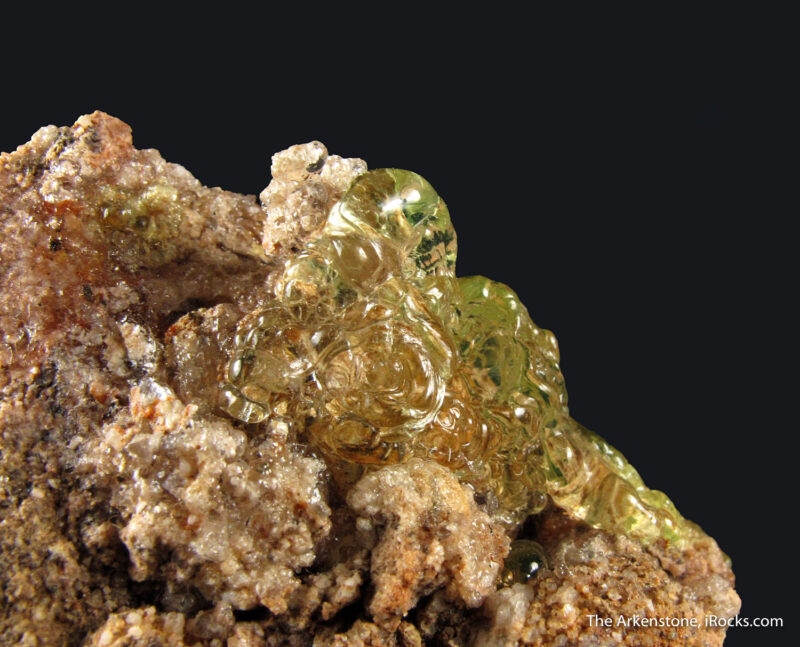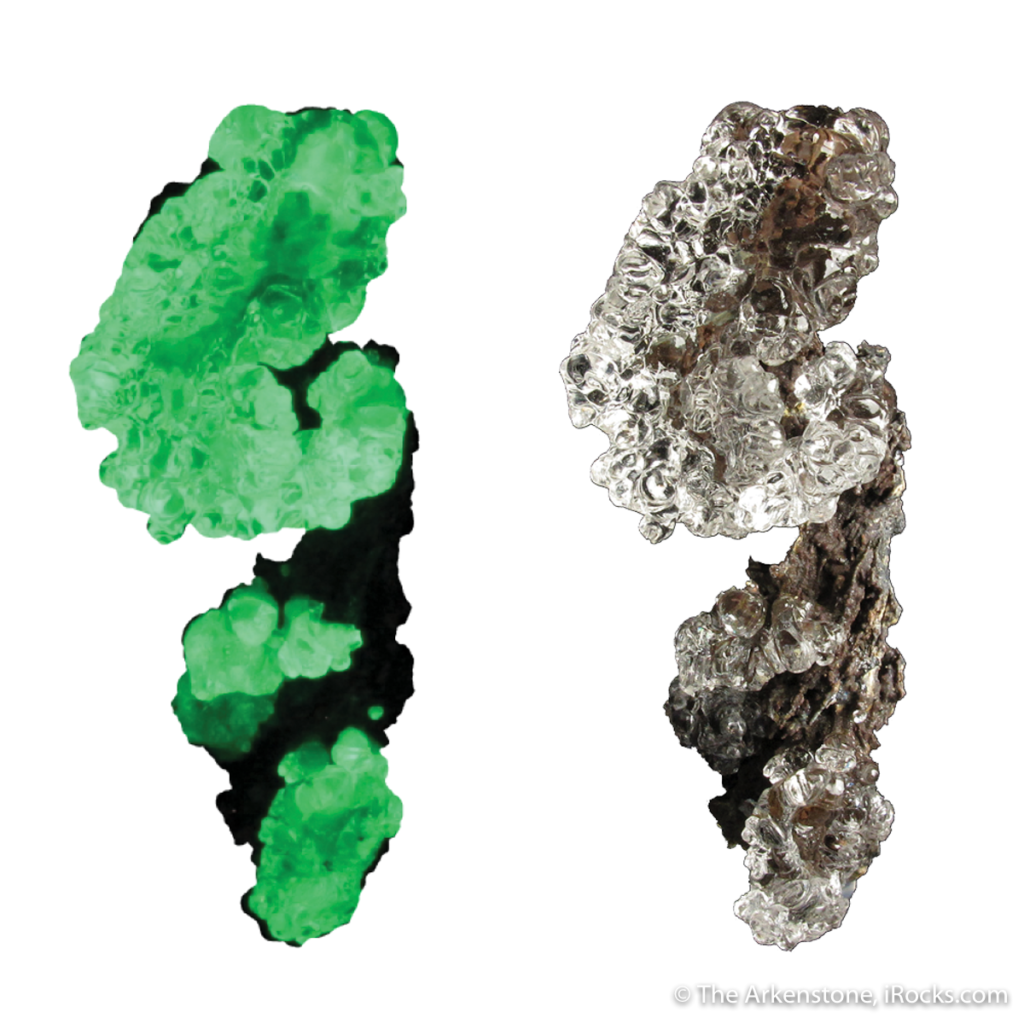The Vibrant Glow of Electric Hyalite Opals
Opals are some of the most unique gems found on earth for their wide display of color. Fire opals are revered for their translucent coloring with flashes of red and yellow hues. Lightning ridge opals are a darker variety with splashes of red and green.
Of the many opal varieties, one of the most unique versions is hyalite opal. But unlike the fire and lightning ridge opal, hyalite opal’s display of magnificence is best seen in the dark… check out what happens in the video below when the lights go out and a blacklight comes on!
The Opal with a Fluorescent Glow
One of the most captivating qualities of hyalite opal is its fluorescent green glow in shortwave ultraviolet light. All minerals can reflect a degree of light, but some have the physical qualities that allow them to temporarily absorb a small amount of light and releases it in a different wavelength.
While the hyalite opal may appear milky to colorless, with certain “electric” hyalites, the change in wavelength is visible to the human eye as a glow that is intensified just by sunlight or moving into a dark room.
How the “Bubbles” Are Formed
At a glance, hyalite opal looks like a cluster of milky bubbles on sedimentary rock. This globular mass comes in irregular shapes and sizes, giving it a weak opalescence (play of color) that is a hallmark of other precious opals. The tiny beads of hyalite contain around 3-8% water and are made of hydrated silicate.[1]
Like other opals, the hyalite opal lacks the crystal structure of most minerals. Instead, they form spherules through the layered massing of silica gel.[2] To form hyalite opals, the layered massing of silica must solidify within its gas phase. Most of this activity takes place within irregular crusts of volcanic and pegmatite environments.
When the exposed lava begins to cool and harden, gasses rich in silica and water travel through the cooling lava and the bodies of rock around it. Some of the silica and water rich gas is trapped in fissures and pockets within the rock, continually cooling and lowering in pressure as it turns into a liquid. The byproduct of this process is a bubbled botryoidal crust of hyalite opal that is less hydrated than precious opal.

Gemmy field of lustrous, green, botryoidal Hyalite Opal that has bright fluorescence. From Zacatecas, parts of this Opal are a full half centimeter thick with plenty of cutting material. These fluoresce in the natural sunlight, just holding it outside!
Hyalite opals can be found in precious opal-rich regions around the world like Australia. The most common regions that produce the most hyalite are Central Europe, Northeastern United States, and Mexico. Recently, major discoveries of hyalite opal have been in the Zemplen Mountains of Hungary and Zacatecas, Mexico.
Opals are revered for their wild display of color. While the hyalite may not have the impressive color splashes of the lightning ridge or the striking yellow of a fire opal, their fluorescent glow is vibrant and must be seen to believe it!
Interested in adding a hyalite opal to your collection? Browse specimens for sale from Mexico and Hungary.
Follow the Arkenstone on their many mineral shows throughout the year! Information on the shows we’ll be attending can be found on our Mineral Shows page. We’d love to meet with you and talk about the specimens in our collections!
We’ve recently updated our galleries with many impressive specimens from around the world. You can find our latest collections here.
[1] “Hyalite”. Mindat. https://www.mindat.org/min-32188.html
[2] Franca C, et al. “Physical and chemical properties of some Italian opals”. Periodico di Mineralogia. http://citeseerx.ist.psu.edu/viewdoc/download?doi=10.1.1.943.1734&rep=rep1&type=pdf
